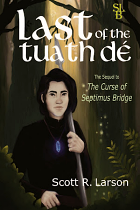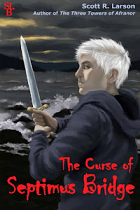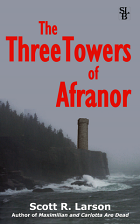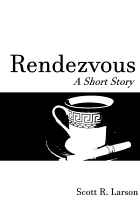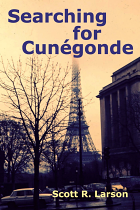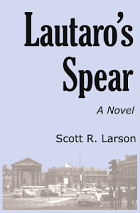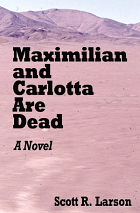U-571 ★★☆☆
What better way to observe the 56th anniversary of D-Day than to see a good, old-fashioned, rip-roaring World War II movie? Of course, any submarine war flick has to contend with the memory of Wolfgang Petersen’s classic Das Boot, and that’s stiff competition. (Crimson Tide skirted the comparison by being mainly about mutiny and morals rather than fear and tension.) U-571 attempts to evoke the claustrophobic pressure and sweatiness of Das Boot all right, but there is also a heavy dose of patriotic tribute in the vein of Saving Private Ryan. In the end, however, it is mainly a thrills-and-chills adventure ride with one darn thing after another going wrong to wrack up the nerves. To its credit, Jonathan Mostow’s film goes a long way to define characters so that the young men in jeopardy are more than just pieces on a gameboard. The underlying plot is about Matthew McConaughey’s ambitious lieutenant and how his baptism of fire hones his leadership skills. By the final reel, he is meant to have grown into a true leader of men, but to me he just seemed to have gotten really creepy. (Seen 5 June 2000)
The Unbelievable Truth ★★☆☆
In a bit of cosmic nostalgia convergence for me personally, this is an indie flick that made at splash among film fest goers in Seattle back in 1989 and was also championed by Irish Times critic Michael Dwyer—the reason it was brought back for another screening at this year’s Jameson Dublin International Film Festival. So how has it aged? Well, it has acquired a fair deal of poignancy because it was the debut of a very young Adrienne Shelley, who was murdered three years ago in New York. She was an appealing screen presence and, it must be said, really makes the movie. It is also an early film of Hal Hartley, who set it in his own hometown of Lindenhurst, Long Island, and financed it with cheap bank loans taken out by himself and his friends. The title evokes classic romantic comedies, like Leo McCarey’s The Awful Truth. (And now, unfortunately, Robert Luketik’s much more recent The Ugly Truth.) Like many indie films, this sets out to be an anti-romcom. Hartley sets it up nearly like a spaghetti western, with a stoic Robert Burke returning home after a prison stint, with a set jaw that would do Clint Eastwood proud. (Dressed entirely black, in a running gag, he keeps getting asked if he is a priest.) And the tone doesn’t change, no matter how screwball things get. Time and a couple of decades of Sundance darlings have worn away a lot of the novelty of this, but the film is still diverting enough. Among the points of interest is a very young Edie Falco (in her second screen role) as a very romantically aggressive waitress. (Seen 22 February 2010)
Uncle Howard ★★☆☆
The opening shots of this documentary look like nothing so much as video caught by a smartphone that somebody did not realize was recording. Lest we fear that this is going to be one of those kind of documentaries, the footage soon settles down into a fairly coherent narrative. The best way to describe this work by Aaron Brookner is with those damning words personal and heartfelt. The filmmaker’s self-immersion in the movie is alternately fascinating and frustrating. It takes the form of Brookner’s quest to understand and appreciate, as an adult, his beloved uncle and role model, whom he only knew personally as a child. Aaron would have been only seven when Howard died, but there is no shortage here of home movie footage of the two of them. This documentary would still be fascinating without the personal angle, as Howard Brookner was a promising filmmaker who made documentaries about Beat icon William S. Burroughs (with whom he became a close friend) and experimental stage director and playwright Robert Wilson. He died in 1989 during post-production of his only feature film Bloodhounds of Broadway, a musical drawn from the work of Damon Runyon and which featured such actors as Madonna, Matt Dillon, Jennifer Grey, Rutger Hauer and Randy Quaid. There is ample footage of Burroughs throughout, as well as Jim Jarmusch, who was the sound recordist on Burroughs: The Movie. Other famous New York faces of that time and that scene (e.g. Andy Warhol) flit through various snatches of party footage. Interviews with Brookner’s mother and grandmother are particularly poignant. There is something of an attempt to turn the film into an indictment of the government for not being more aggressive in AIDS research, as Aaron ponders how much more his uncle could have accomplished if he could have been cured. By that point in the film, though, we have already learned that Brookner had decided not to take AZT because he felt it deadened mind. (Seen 6 July 2016)
Under the Tuscan Sun ★★☆☆
You can add this flick to the list of movies about foreigners going to Tuscany and becoming enchanted. Technically, that list is about “Brits in Tuscany,” but sometimes it is Americans that get enchanted, as did Liv Tyler in Bernardo Bertolucci’s Stealing Beauty. This time it is a recently divorced literature professor from San Francisco, played by a fairly luminous Diane Lane. Although based on a book by a real person who did go to Tuscany, the movie follows the conventions of the standard romance novel. It just barely escapes an outright “chick flick” designation because of its gorgeous location photography and its portrait of the mixing of local and expatriate communities in a truly enchanting land. While primarily a Yank-in-Tuscany film, it is also a standard woman-learning-again-to-stand-on-her-own flick, a why-did-I-move-from-civilization-and-buy-this-old-rundown-house picture and a friends-are-the-families-we-choose ensemble movie. We tolerate its predictability because of the scenery, the food, the joie de vivre and a number of nice performances from the cast, notably Lane and, in a featured role as the local stylish eccentric, Lindsay Duncan. The director is Audrey Wells, who made this before she wrote the screenplay for the American remake of Shall We Dance? and after she wrote The Truth About Cats & Dogs and George of the Jungle, which is featured in a cinema scene. (Seen 18 March 2006)
Unexpected ★★★☆
Maybe it’s just me, but one of the questions in the back of mind going into this indy flick about parallel pregnancies was whether it was going to be “political.” The setup is one that easily could have prompted a message or two. Samantha is a 30-year-old teacher in a Chicago high school that will be closed at the end of the year. As she faces unemployment, she finds herself unexpectedly pregnant. While in a committed relationship, this change in her life is still quite a shock. At the same time she becomes aware that one of her best students, Jasmine, is also with child. Samantha has high hopes for Jasmine and is actively encouraging her to go to college—something that was always going to be difficult enough for someone being raised by grandmother on welfare. It’s the kind of story that could turn angry or depressing. Instead, filmmaker Kris Swanberg (who wrote the screenplay with Megan Mercier) has made a movie that feels the way real life feels. Things just happen, and people deal with them. There are no good guys or bad guys. That doesn’t mean that there are not disagreements or arguments or conflict, but everyone has their valid points. The closest thing to a villain of the piece might be Elizabeth McGovern, as Samantha’s traditional mother who rankles the couple with her judgments, but even she comes up trumps when it matters. Samantha is played by the very likeable Cobie Smulders, known to many for the sitcom How I Met Your Mother but more familiar to others of us for her work on the big and small screens as SHIELD agent Maria Hill. As Jasmine, Gail Bean does a lovely job as a teenager full of promise but all too aware of her limited circumstances. The beauty of this movie is that it does not sugar coat the experience of pregnancy and childbirth or anything else, but it does leave you feeling pretty good about the world in spite of everything. (Seen 8 July 2015)
United 93 ★★★★
It is fair to ask whether I am giving this movie its high rating more for its subject matter than for its film quality. While I grant that much more time has passed since World War II than 9/11, you still have only to compare this respectful and honest film with Michael Bay’s Pearl Harbor to appreciate the accomplishment of English writer/director Paul Greengrass. Another question that went through my mind was: is this movie our culture’s equivalent of those suicide videos that jihadist “martyrs” record before they blow themselves up, along with innocent bystanders? Is this how we honor our martyrs? Is this movie a calculated (or inadvertent) propaganda piece that incites Americans to seek revenge? I have to say that I was surprised how much anger the final reel inspired in me. If I could have reached through the movie screen and throttled the hijackers, I would have. But it didn’t make me angry at Moslems in general or Arabs in general. I have to wonder if any American director could have so effectively let this story tell itself, as Greengrass has, using the same sort of docudrama style he employed in another emotional true story, 2002’s Bloody Sunday. Despite this style, however, we do get something of a foreshadowing of the politics of the War on Terror in the imagined/recreated section dealing with the passengers’ various attitudes toward the assault on the hijackers. Some are gung-ho for it, and some want no part of it, notably a man with a European accent, who is sure that everything will be fine when the hijackers’ demands are met. Another stray thought: I have to wonder if John Updike has seen this movie. Twice this week I have heard him defend to different interviewers his decision to write a book trying “to get inside the head” of a suicide bomber. Updike shouldn’t have to defend this. What is less defensible, however, is his assertion that there is basically no difference between suicide bombers and U.S. soldiers. If he cannot honestly see the difference between fanatics, who deliberately kill themselves as a means to kill civilians, and soldiers, who hope to survive their battles and who are punished when they caught committing atrocities, then he isn’t nearly as smart as those interviewers keep telling us he is. (Seen 14 June 2006)
Unstoppable ★★☆☆
Now, here’s a real man’s man’s flick. No teenagers camping in the woods. No adolescent angst about what to do with one’s life or whether that moody boy is really into you. Okay, so we do get a bit soft toward the end with some serious male bonding between Denzel Washington and Chris Pine, but it’s been a longstanding rule in this kind of movie that it’s okay for a manly guy to get a bit teary over a relationship if a restraining order is involved. This has everything boys of all ages could want: lots of trains, a runaway train, a train doing a wheelie on a curve, grownups in peril, children in peril, and plenty of clueless suits who don’t listen to the guy who knows the right thing for every situation—in this case, Mr. Washington, who is now old enough to play a someone forced into early retirement. This flick’s testosterone bona fides were never in question, since it is directed by Tony Scott, who has gotten our adrenalin pumping with everything from Top Gun to Enemy of the State to Man on Fire to the last big train movie, the remake of The Taking of Pelham 1 2 3. Scott is such a master of the genre by now that he somehow gets our pulse racing even in the early scenes when we are just watching ordinary people going about their daily work. The air of impending disaster is palpable from the very first frame. In the end, this is a very satisfying movie, not just because it is a slick entertainment, but because it is what qualifies as a feel-good film in the current environment. We like seeing the suits (stand-ins for politicians and greedy corporate types) getting their comeuppance. We feel that Washington and Pine could have plugged that hole in the Gulf of Mexico with no problem and that, if they were in charge, they could probably even get the unemployment rate down. (Seen 24 November 2010)
The Untold Tales of Armistead Maupin ★★☆☆
I wonder if any author who has set a novel in San Francisco over the past few decades can have done so without bearing in mind Tales of the City. I know I certainly could not have. I am not speaking hypothetically. A third of my upcoming book is set in San Francisco in 1980, smack dab in the period covered by Maupin’s tales. His books (begun as a newspaper serial) capture the time and place with a permeating effectiveness. Not knowing much about him, I always assumed that a name as cool as his had to be nom de plume. I imagined he was a reclusive, anonymous writer wrapped in mystery and unknown to the outside world. I could not have been more wrong. Not only is Armistead Maupin his real name (actually followed by a Jr.), but his life has long been an open book, so to speak. In this adoring documentary by Jennifer M. Kroot, we learn that Armistead Sr. was the antithesis of his son. A right-wing bigot who fancied his family old Southern aristocracy, Armistead Sr. was a distant and intimidating figure. Only in later years did his son come to appreciate the demons his father himself must have dealt with. We follow Maupin’s unlikely journey—from working for Jesse Helms to Vietnam to a visit to Richard Nixon’s Oval Office to his move to San Francisco and an entirely different life of personal and sexual freedom. Tributes are paid by admirers-turned-friends Neil Gaiman, Ian McKellen and Amy Tan. We visit the hide-away city residence that inspired 28 Barbary Lane. Clips from the PBS television adaptation alternate with interviews with Laura Linney and Olympia Dukakis, and we are reminded how controversy over the show’s sexual content resulted in PBS not airing a second series. The film is never less than sympathetic and perhaps fawning of Maupin but does not shy away from others’ criticism of some of his actions—particularly his public outing of Rock Hudson as the actor lay dying of AIDS. In the end Maupin is such a courtly and pleasant man—despite certain sharp opinions that he tends to underplay—it would be very hard not to like him as a person. The best thing about Kroot’s doc is that it, like Maupin’s books, deftly and completely captures a time and place that for many of us will live forever in memory. (Seen 12 July 2017)
Up ★★★☆
Despite the cute animals and wild action, the gang at Pixar cannot exactly be accused of sugar-coating things for kids. After all, the first half-hour of this movie is spent explaining to the tykes that all their grand dreams of adventure probably won’t come true. The movie then proceeds to teach them that their childhood heroes are probably really craven and evil. The change in tone from the lyrical prologue to the more or less standard action romp may be a bit jarring, but it’s good to see that studios still recognize that films (even ones aimed at children) should be about something rather than pure escapism or manipulation. Still, it turns out to be a strange mix of themes that seem borrowed from It’s a Wonderful Life, The Wizard of Oz and Heart of Darkness. And the realistic quality of the early scenes contrast starkly with the holes in logic we have to overlook in the latter stretch. (If there are enough helium balloons to lift his house, how exactly did Carl tie them down? How is it again that a man who has invented a dog-to-human translator has to find a goofy-looking bird to rehabilitate his reputation?) In the end, we overlook all that and enjoy the technical and story-telling wizardry and focus on the film’s ultimate messages: that the real adventures in life are the people and other creatures who become part of it and that it is never too late to set off on a new adventure. (Seen 6 November 2009)
Up in the Air ★★★☆
The temptation is to compare this Golden Globe winner (to Sheldon Turner and director Jason Reitman, for Best Screenplay) to Steven Spielberg’s The Terminal. But whereas The Terminal used an airport as a metaphor for how bureaucracies can thwart individual free will, Reitman’s flick uses the domestic air travel infrastructure to portray the individual’s voluntary self-exile from life’s messy entanglements. A better comparison in tone and theme might be Sofia Coppola’s Lost in Translation, which is also about people tentatively connecting in an artificial environment. George Clooney plans the ultimate road warrior, a man who fires strangers for a living. While this may sound like movie shorthand for soullessness, our hero actually sees his work as a mission for good. He is sort of a doula for the emotionally painful process of job layoffs. These fleeting but intense connections, along with random encounters with fellow travelers, provides Clooney’s character with the control of his own life that he craves. But, of course, it wouldn’t be much of a movie if something didn’t happen to threaten his safe, impervious, hermitically sealed world. This comes in the double form of a young hotshot in his company who would end his carefully crafted lifestyle (Anna Kendrick) and his opposite number in female form (Vera Farmiga). Some have criticized the movie for buying into the standard Hollywood storyline that single people can’t or shouldn’t be happy. This is not fair. The true message of this well-written, wryly funny, wonderfully acted film is as follows: be careful what you wish for. (Seen 20 January 2010)
The Usual Suspects ★★★☆
The Usual Suspects could have been just another caper movie or gangster shoot-‘em-up. But there is a mystery at its heart that gradually ensnares us and keeps us watching anxiously until the very end. The story deals with five criminals who are gathered for a police line-up. Once thrown together, they decide to collaborate on a robbery. The most reluctant is Dean Keaton (Gabriel Byrne) who was a corrupt cop but is now trying to be a legitimate businessman. He is also the natural leader of the group. Among the others are Stephen Baldwin (8 Seconds, Threesome) and Kevin Spacey (180 degrees from his Swimming with Sharks role) who narrates the tale under questioning from customs cop Chazz Palminteri (Bullets Over Broadway). It turns out these five criminals may not have come together entirely by chance, and therein begins the mystery. Unraveling what really happened becomes particularly tricky because Spacey’s character (a two-bit criminal who is partially crippled) may or may not always be telling the truth. While the surprise ending isn’t impossible to see coming, it is handled extremely well, and the film keeps you guessing until almost the very last frame. Director Bryan Singer, whose previous film was Public Access, has definitely come up with a crowd-pleaser with this one. (Seen 9 June 1995)
Utomlyonnye solntsem (Burnt by the Sun) ★★★☆
Burnt by the Sun is the Russian movie which won the Oscar for Best Foreign Film this year. The director (Nikita Mikhalkov who made Slave of Love, among others) dedicates it to all those who have been burned by the sun of the Soviet revolution. It is beautifully photographed with the bright haze of nostalgia. Most of the film is a joyful observation of an extended family’s happy times in a countryside dacha during the summer of 1936. We learn that Sergei is a colonel and a hero of the revolution. Most of what we see is through the eyes of his young and too-cute-to-be-true daughter Nadia. In this way, it’s not unlike such films as Fanny and Alexander. (I thought Sergei looked a bit old to be Nadia’s father, but then I read in the program notes that Mikhalkov himself played Sergei and that Nadia really is his daughter.) Since this film is about Stalin’s Soviet Union, however, we shouldn’t be too surprised if the film takes a dark turn by the end. This movie really is beautifully made and very heart-felt. The Academy chose well. (Seen 21 May 1995)
Utvandrarna (The Emigrants) ★★☆☆
It is nearly impossible for me to approach this 1971 Swedish epic with any semblance of objectivity. And I’m not even talking about my youthful crush and fixation on the radiant Liv Ullmann. This movie and its sequel (The New Land) were adapted (by Bengt Forslund and the films’ director Jan Troell) from a series of four novels by Vilhelm Moberg about a group of people who left their hard lives in Småland to make an arduous journey in hopes of a better life in Minnesota in the 1840s. About a million Swedes made that journey, including three of my great-grandparents (a few decades later to Kansas). At 191 minutes The Emigrants—which only takes the story as far as stalwart and resolute Karl-Oskar Nilsson’s discovery of the piece of land he plans to make his new farm—cannot exactly be called fast-paced. The first hour documents, in a relentlessly naturalistic style, the Nilsson family’s difficult life on a small farm that barely supports them. Karl-Oskar takes over the farm from his elderly parents and weds the comely Kristina, whose smile is glorious when she sits on a swing but who becomes increasingly worn as she goes through one pregnancy after another. The farm cannot also support Karl-Oskar’s younger brother Robert, so he is hired out as a farmhand for a callous landowner. Fascinated by articles about the United States, he muses that he would actually be better off as a slave in America than a peasant in Sweden—because, unlike landlords, slaveowners at least have to house and feed those working the land. (He will later learn that the U.S. has its own class system, even if it’s not as rigid as Europe’s.) When they finally make the difficult decision to leave, the Nilssons travel with members of a religious sect chafing under persecution from the official state church. The movie’s second half recounts the punishing sea voyage across the Atlantic. By the time we have endured cramped quarters, lack of sanitation, illness, death, lice and maggoty food along with the passengers, it’s enough to put us off boats for the rest of our lives. The emigrants’ arrival in the New World, while a relief, is not entirely a happy ending either. A long journey halfway across the continent still remains. For Americans the movie is fascinating for portraying immigration from the immigrants’ point and showing the 19th-century version of our country through newcomers’ eyes. As Kristina, Ullmann goes from a near-child to a woman old before her time. I have lately learned that the Kristina character subsequently became an object of derision among some Scandinavians for being a whiner—even inspiring a cruel parody song by the Danish rock band Shubdua—but this is totally undeserved. Karl-Oskar is played by the legendary Max von Sydow, who left this world in March. He had recently been paired with Ullmann in the Ingmar Bergman films Shame and The Passion of Anna. A couple of years later von Sydow would be Father Merrin in The Exorcist. Decades later he would be the intergalactic wanderer Lor San Tekka in a Star Wars movie and the Three-Eyed Raven on Game of Thrones. If an actor was ever born to shepherd us to new worlds, it was he. (Seen 12 August 2021)















